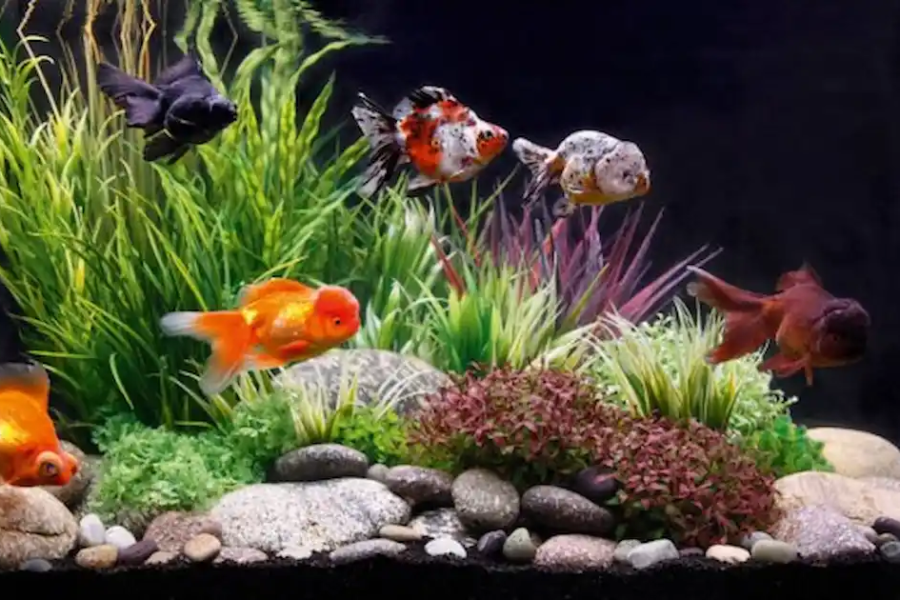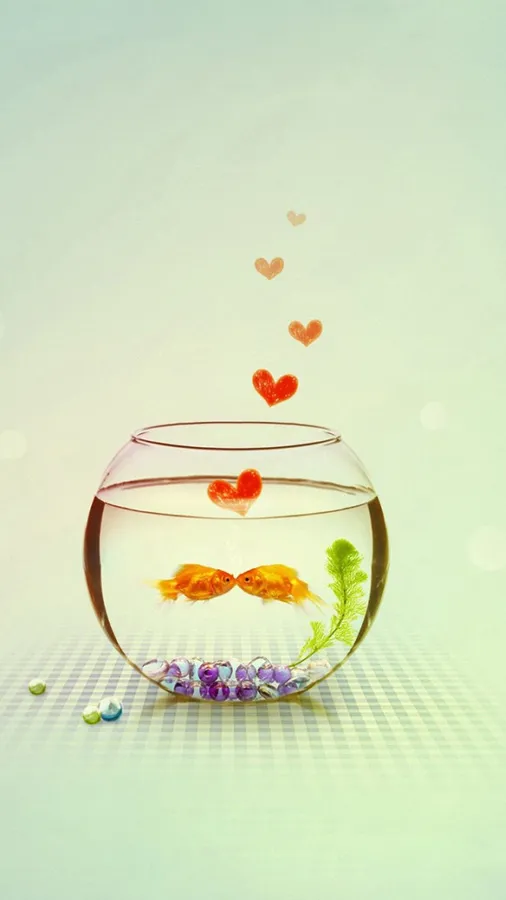
Choosing the best goldfish tank mates is a bit like matchmaking on a reality TV show, but instead of roses, we have fish flakes! Goldfish are social butterflies (or should we say, fish?) who love a bit of company. But just like in any reality show, drama can kick off if personalities clash.
That’s where we come in. This blog post is your cupid in the aquatic world, providing you with the ‘who’s who’ of the tank mate scene. We’ll guide you through the do’s and don’ts, the fishy friendships, and the underwater feuds, all to ensure your goldfish finds their perfect companion. So, let’s dive in, shall we?
Knowing Your Goldfish
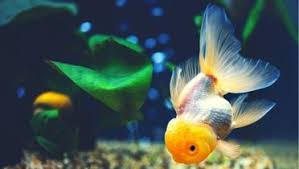
First things first. Let’s get to know your buoyant little buddy, shall we? Understanding your goldfish’s behavior and needs will help you choose the best finned friends to share their aquatic abode.
Understanding Goldfish Behavior
Goldfish, despite their petite size, have personalities larger than life. They can be playful, curious, and, contrary to popular belief, capable of remembering things! Yep, you heard it here first, the “goldfish memory span” myth is baloney. Knowing this, keep in mind that goldfish’s behavior can influence their relationship with other potential tank mates. Some are party animals who love to swim and play, while others might prefer chilling out in the solitude of their algae-covered castles.
As we bid goodbye to the shenanigans of our finned friends, let’s dive into their environmental needs, a.k.a. the essence of their aquatic lifestyle.
The Environmental Needs of Goldfish
Lo and behold, we’ve ventured into the nitty-gritty details of a Goldfish’s habitat. But a cozy home for our finned friends isn’t just about the eye-catching aesthetics—it’s rooted in the substance. We’re talking about the water quality, the temperature, and the pH level. Goldfish are a little finicky about their surroundings. They have a penchant for warmer waters, with temperatures hovering between 65 to 75°F. Their comfort zone in terms of pH? It lies in the range of 7.2 to 7.6. And as for water quality, they’ve got high standards. It better be as clear as a mountain stream, buddy. Overcrowding isn’t just a space issue—it can compromise water quality and leave you with some pretty stressed-out fish. So, it’s essential to tread carefully.
And remember, just as a home feels empty without the warmth of family, a tank is incomplete without the bubbling camaraderie of tank mates. So, buckle up folks, as we gear up to delve deeper into the enchanting underwater world of aquarium setup.
For those keen on ensuring ample space for their aquatic buddies, check out How Much Tank Space Do Goldfish Need? and The Right Tank Size for Your Goldfish. These articles will guide you in creating the perfect spacious haven for your goldfish.
Aquarium Setup for Goldfish Mates
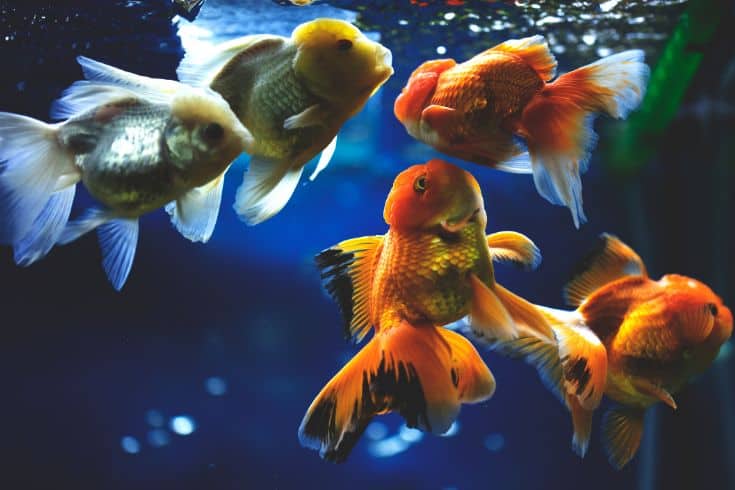
Prepping your tank is a bit like setting up your goldfish’s very own water-zoo. And setting up a comfy home for any potential buddies they might have tagging along is paramount. At this stage, we will cover the ideal tank size, the essential equipment you need, and the perfect conditions for water temperature and pH level.
Ideal Tank Size
Goldfish are more than just a delightful spectacle with their shimmering scales; they’re also athletic swimmers with a need for room to roam. Starting with a standard 20-gallon tank is a good choice for a single goldfish. However, every time you decide to add another scaly companion to the mix, you should be prepared to add an extra 10 gallons of space. In simpler terms, if you’re planning on having a goldfish and its BFF share some aquatic adventures, you’ll be looking at a requirement of at least a 30-gallon tank.
For those of you on the hunt for the perfect tank, dive into our guide on the 10 Best Goldfish Tanks on the Market. It’s curated to help you make an informed choice that ensures your goldfish get the spacious and comfortable home they deserve.
Essential Equipment
Some equipment is essential for a swanky goldfish pad. Filters are a must to keep the water fresh and healthy, while heaters keep the tank nice and cozy. Aquarium lighting, on the other hand, sets the mood for a little underwater disco. Remember, a well-equipped tank is a happy tank.
Optimal Temperature & pH Level
Goldfish love the water temperature around 62° to 72° Fahrenheit, like a refreshing summer day, and a pH level between 7.0 and 7.4, which for them is just right—like Goldilocks with her porridge. Adjust and monitor water conditions diligently to keep sickness and conflicts at bay.
Now you know the basics of setting up the goldfish tank, you are one step closer to ensuring your fish and its future pals live the idyllic underwater life they deserve. But the real fun is just about to start. Ready to dive in? We’re now heading into the world of introductions. Because as in any social setting, first impressions matter, even underwater.
Introducing New Tank Mates

You’ve got your tank mate options for your golden chums, tick! But let’s not simply plop them in the tank saying, “Here’s Johnny!” Here’s where we talk about the grand introductions, ensuring they sync like a well-tuned orchestra rather than a metal band at a ballet performance.
Appropriate Quarantine Process
Think of this stage as a little meet and greet at the gate before the big party. It starts with a quarantine process. You see, new fish may harbor a disease or two. Just as how you wouldn’t want someone to show up at your soiree with the flu, same goes for your tank mates. So, give ’em a short quarantine period, about two to four weeks in a separate tank. This buffers the existing champ goldfish from potentially harmful germs and sets the stage for a long, healthy life together.
Balancing Goldfish Social Dynamics
Next up on this fishy dance card is balancing the social dynamics. A goldfish’s social dynamic could give any teen drama a run for its money. Simply remember this: never put a big aggressive fish with a gentle goldie. You see, the goldfish is like the wallflower at the party and could do without the muscle-flexing bruisers. So the trick is – observe and match the personalities.
Ready for the next stage of the goldfish companionship guide? Brace yourself! We’re diving deep into the world of compatible species, potential problem pals, and why some fishes gel better than others do. Tune in to the next section. You are in for a spectacular rendezvous!
Suitable Goldfish Companions

Let’s dive right into it. Your goldfish deserve the very best buddies, but choosing companion fish is like setting up a blind date. There’s just no guarantee they’ll hit it off.
Common Compatible Species
Your fish need friends, but they’re a bit picky. They prefer cold-water fish like Bristlenose Plecos, Zebra Danios, and Weather Loaches. They’re like the popular kids in school, always hanging around with ‘their kind’. But remember, not all fish in their squad can survive in the same water conditions, so think twice before adding new members to their crew.
Potential Problematic Tank Mates
Here’s the drama: some fish are the equivalent of playground bullies. Betta fish, Tiger Barbs, and large Cichlids should be avoided, as they tend to nip at the goldfish’s fins (just rude, right?!). Species that are fin nippers or more aggressive can turn your peaceful aquarium into a real under-water WWE wrestling match.
Why Certain Fish Make Good Companions
Certain fish make good tank mates because they match the goldfish’s lifestyle beat for beat. Bottom dwellers and mid to top level swimmers respect each other’s territory — like a well-scripted ballet duet. Effective pairing also happens due to similar dietary habits, so they won’t steal each other’s leftovers.
Great! We’ve established potential best friends (and enemies) for your goldfish. The next step to sowing the seeds of goldfish friendship is to ensure a smooth coexistence in the tank. Wipe that sweat, we’ll guide you through the process. So to the next section we go.
Maintaining Healthy Coexistence
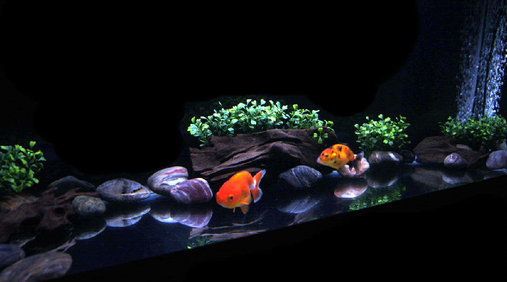
Once you’ve successfully mixed your aquatic society, the real work begins. It’s like blending a family. With time, patience, and the right approach, a harmonious fishy family can be achieved.
Regular Cleaning and Maintenance
Think of your tank as a small slice of ocean, confined in your living room. It needs your help to stay fresh, sparkly, and healthy. Regular cleaning and equipment maintenance are key in sustaining a happy environment. Skim your tank weekly, scrub off algae, and check filters and heaters. Be the superhero your fish tank deserves.
Now, we’re swimming towards our next topic. Bingo! It’s feeding time.
Essential Diet & Feeding Routines
Fish, like people, are what they eat. Therefore, feeding routines and diet choices are vital to maintain peace in the tank. Find a balance between overfeeding and underfeeding. For goldfish enthusiasts, it’s beneficial to dive deeper into understanding their nutritional needs. You might be interested in reading Discover the Best Foods for Your Goldfish, 5 Best Diet Foods for Your Goldfish, and The Best Frozen Foods for Goldfish Nutrition. Vary their meals with flakes, pellets, vegetables, and live foods for nutritional balance.
All done? Awesome! Strap on your troubleshooting gear, folks! An underwater adventure awaits us in the next chapter. What could possibly go wrong, right?
Troubleshooting Common Issues
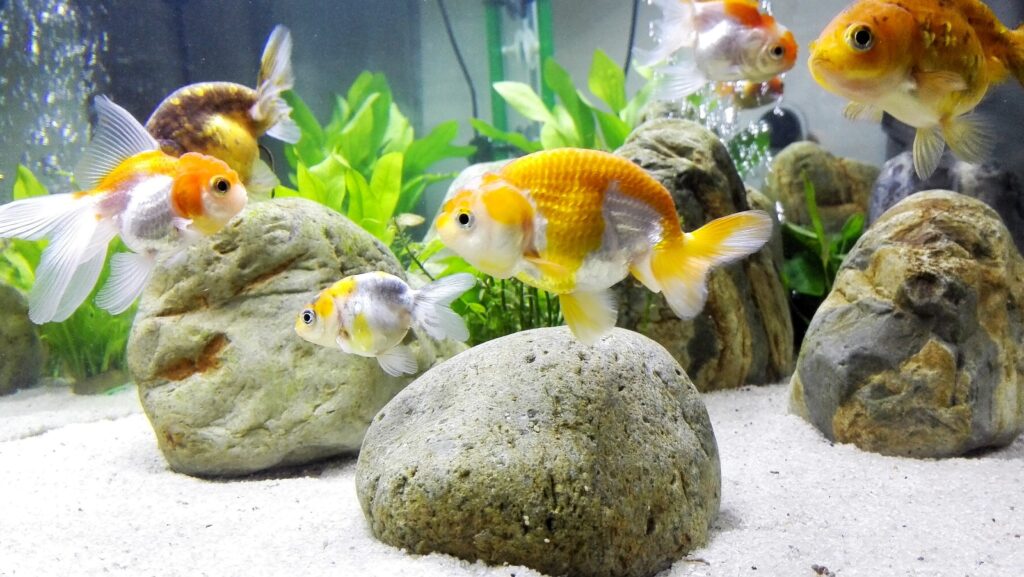
So, you’ve welcomed new buddies for your goldfish and are meticulously following the best practices. But alas! Issues pop up like unwanted advertisements. Don’t panic! Here’s a handy troubleshooting guide for two common issues.
Aggression Among Tank Mates
Spotting your fishy pals nipping at each other more than their food? Dawning the detective hat, are we! Let’s understand the cause and find a solution.
First, overcrowding could be your problem. Imagine sharing a cramped studio apartment with five roommates. Some fin-slapping incoming, right? Maintain sufficient space for all your fish to swim freely.
Second, ensure that the tank residents are compatible. If you’ve jumped ahead and mixed incompatible species, that’s like hosting a party where nobody likes the music.
But how to curb the aggression? Try rearranging the tank environment or separating the bullies temporarily. Remember, the goal is harmony and not an underwater Fight Club.
Let’s dash towards the next issue.
Solving Water Quality Problems
Caught your fish gasping at the water’s surface? Skipping meals? This could indicate a water problem. Goldfish aren’t exactly Olympic swimmers, but they do need a clean, well-regulated pool.
Water quality issues typically stem from one of three things – irregular cleaning, overfeeding, or incorrect water parameters. It’s like throwing a chic party but forgetting to mop the floor or cool the room.
Maintain a consistent cleaning schedule. Overfeeding can make your tank look like a vegetable soup that’s been in the fridge for too long. For those who find feeding schedules challenging, consider exploring 10 Top Automatic Goldfish Feeders Options to maintain consistency. So, feed sparingly.
Ensure the water has the right pH balance, temperature, and hardness. Speaking of setting the right environment, delve into the 5 Best Substrates for Goldfish Tanks of All Sizes to make sure their bottom is as comfortable as their water. Your goldfish want their water like Goldilocks wanted her porridge: just right.
Wrap Up
In conclusion, following these tips should ensure your goldfish and their tankmates keep swimming happily together. Adapting to new mates can be tricky, but with patience and attentiveness, your aquarium should sail smoothly! Onward, fellow fish lover!
To sum up, understanding your goldfish’s specific needs is paramount for their healthy existence. From environmental needs to behavior, everything contributes to their overall wellbeing. Aquarium setup, accordingly, goes beyond just an appealing layout – it’s about creating an optimal environment suitable for goldfish and their potential tank mates. Ponder on ideal tank size, essential equipment, and maintaining correct water temperature and pH balance.
The introduction of new tank mates should involve a careful quarantine process to avoid jeopardizing the health of your aquatic family. Maintaining balanced social dynamics in the tank is crucial. You should also be knowledgeable about which fish species are more likely to coexist peacefully with goldfish and which ones could possibly cause issues. A regular cleaning routine, adherence to an appropriate diet, and solving common issues like water quality and aggression among tank mates also play a significant role in maintaining a healthy and harmonious aquatic life for your goldfish and their companions.
Frequently Asked Questions (FAQ)
Question: What are some commonly compatible species with goldfish?
Answer: Some popularly compatible species include Bristlenose Pleco, White Cloud Minnows, Rosy Barbs, and Ghost Shrimp. Remember, the characteristics of every fish must be considered before making a choice.
Question: How can I solve water quality problems in my goldfish tank?
Answer: Regular testing using an aquarium water test kit can help pinpoint issues. If pH, ammonia, nitrate, nitrite levels are off, consider adjusting them. Also, regular water changes and tank cleanings can prevent issues.
Question: How big should a tank be for goldfish and their tank mates?
Answer: The size greatly depends on the number and species of fish, but generally, for each goldfish, you need a minimum of 20-30 gallons with additional space for their friends.
Question: What do I do if there is aggression among tank mates?
Answer: If a fish is causing issues, you might need to separate it from the tank. Also, providing enough space and hiding places can help prevent aggressive behavior.
Question: How often should I feed goldfish and their tank mates?
Answer: Typically, feeding goldfish twice a day with the amount they can consume in 2 minutes is good. However, the feeding routine might change depending on the species of other fish.
Question: How do I introduce new tank mates to my goldfish?
Answer: Proper quarantine and slow introduction are crucial. Start by keeping the new fish separately, then gradually expose them to each other. This will reduce stress and disease transmission.



